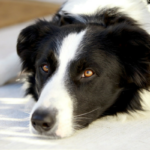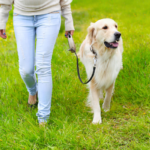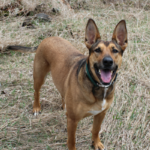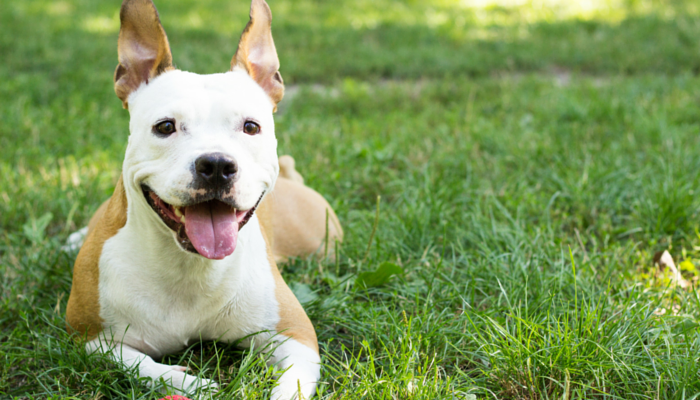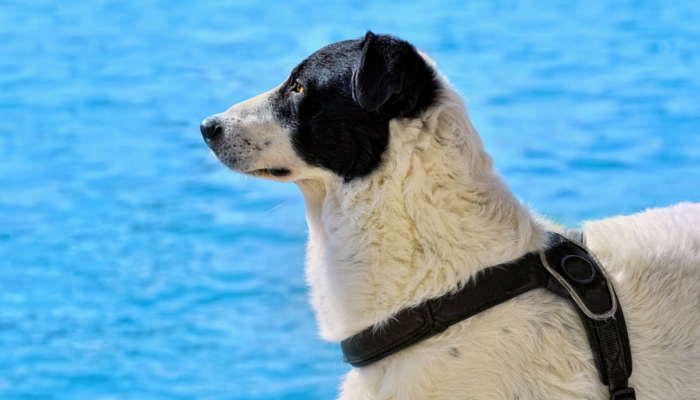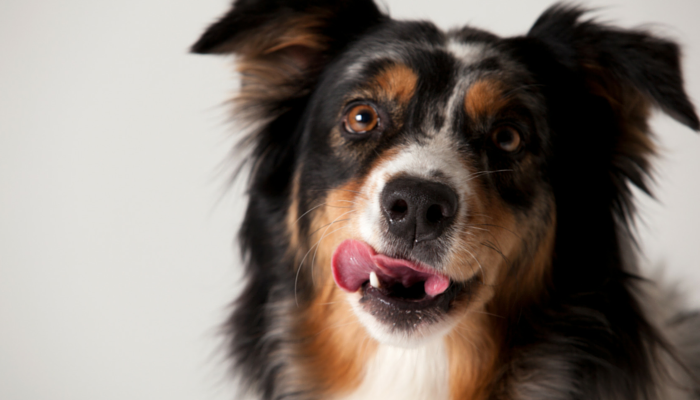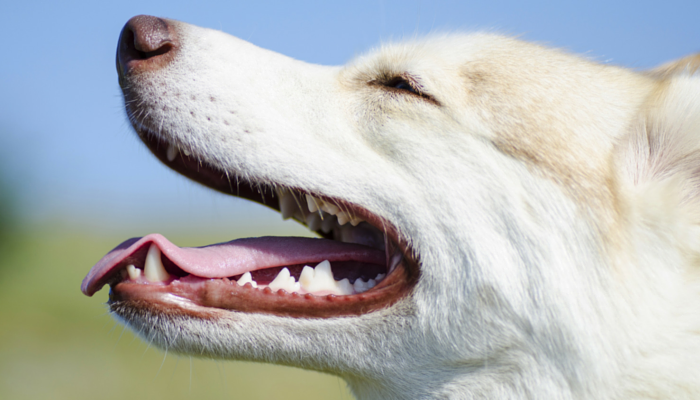[ad_1]
We all know that many Americans struggle with their weight, but did you know that’s also true for our dogs?
Over half of American dogs are overweight. And carrying extra weight around puts them at risk for developing health issues such as hypertension, diabetes, osteoarthritis and liver disease.
That’s the bad news. The good news is we control one of the biggest factors that contribute to our dog’s weight — their food.
Over Half of American Dogs Are Overweight
It’s not just Americans that are suffering from an obesity epidemic — it’s affecting our dogs as well. If your dog is overweight you’re certainly not alone. An estimated 54% of American dogs are overweight.
It’s a problem that tends to come on gradually, and when you live with your dog everyday it’s easy to miss those changes in their weight.
And have you ever met a dog that didn’t love treats? It’s so easy to overfeed our dogs because they love food so much. And who doesn’t want to make their dog happy by giving them something they love? I know I’m guilty of it. But unfortunately for our dogs all those extra calories add up pretty quick.
And while exercise can help your dog lose weight it’s only half of the equation. If you ate nothing but high calorie junk food all day you’d struggle to keep the pounds off, regardless of how much you exercise. And the same is true for our dogs.
It’s hard to keep our dogs fit and lean if they have a poor diet to begin with. I recommend reading “Your Dog Can’t Out Exercise a Poor Diet” for further information on burning calories and the importance of understanding basal metabolism.
Keeping our dogs lean and fit is our job, and one of the ways we can do that is by controlling the amount of food they get each day. Each dog is different, and it will take awhile to find the balance that’s right for your dog. But coming up with a personalized diet that keeps your dog lean can add years to their life.
The results of feeding your dog less are pretty remarkable. Researchers found that feeding a dog less can increase their lifespan by 25%, increasing a dog’s median lifespan by 1.8 years.
Be Careful With Dog Food Instructions
First things first let’s talk about dog food labels. They’re good for giving us a pretty good estimate of how much our dogs should be eating based on their size, but they don’t take your dog’s activity level or age into account.
Every dog food has their own recommendations on proportion sizes based on a dog’s weight. But there’s a problem with those estimates — they’re quite varied and not exact. Some brands tell you to feed 1/2 – 1 cup per 20 pounds — and that difference alone is 50%. And when we’re talking about an 80 pound dog that’s a difference of 2 – 4 cups. So if you feed on the high end your dog could be eating 50% more every single day than someone who sticks to the low end.
How to Decrease Your Dog’s Food Intake
The key to decreasing your dog’s food intake is to do it slowly and accurately. That means using a measuring cup or scale and measuring out every single meal your dog eats.
If you’re currently feeding your dog what their food label recommends and they’re still gaining weight (or need to lose a few pounds) try decreasing their meals a little bit at a time. I’d start with a small decrease (5 or 10%) and keep track of their weight for a week or two. If they’re still not losing weight decrease it a little more.
The goal is not to decrease all of their food intake by 25% at once, it’s to find the amount of food that’s right for your dog. Your dog’s age, health and activity level are all factors that go into figuring out how many calories they should be getting daily.
When my dog started gaining weight a few years back I did this tactic. She started gaining weight when she was about 2 years old, despite not changing her diet or exercise routine. It wasn’t too fast but it was almost two pounds a month. In a year she could have potentially gained 24 pounds, which for her would have been quite alarming. Obviously something was wrong; she was still an active dog yet she was getting chubby.
Rather than switching to a diet dog food I made some adjustments to the amount I was feeding her. According to the dog food label she should be eating almost 4 cups of food a day because she weighs 70 pounds. Obviously that wasn’t working for her anymore so I made some adjustments and slowly started decreasing the amount she got.
It was pretty easy because she eats the same kind of food everyday. I got out a measuring cup and started decreasing her food intake by 5% at a time and started keeping track of her weight. To keep track of her weight I’d take her to the vet’s office for a quick weigh in once a week. (I couldn’t get my big dog to sit on our small scale, and I struggled trying to pick her up and get an accurate weight)
She didn’t lose much weight with a 5% decrease in food, so over the a few months I kept decreasing it 5% at a time until we got to the amount that was right for her. And that amount ended up being 25%. To say I was shocked was an understatement. I certainly didn’t think I was overfeeding her to begin with, but that 25% decrease is what has helped keep her trim over the years.
So be cautious when you read dog food labels — they’re a good estimate, but they’re not exact.
Feeding Your Dog Less Can Increase Their Life Span
A study was published in 2007 that looked at the long term effects diet restriction can have on the life span and age related changes dogs experience. The research was conducted over two decades with 48 Labrador Retrievers as the subjects.
Dogs were paired off at 8 weeks of age; one of the dogs would be fed 25% less food than it’s pair mate for the duration of it’s life. Serum biochemical analysis were performed, body condition was scored, and body composition was measured until the dogs reached 12 years of age.
The dogs who were food restricted weighed less, had lower body fat content and lower serum triglycerides, triiodothyronine, insulin, and glucose concentrations. The median life span for the dogs who ate 25% less were found to be significantly longer. The clinical signs of chronic diseases were also delayed for the restricted diet dogs.
The results suggest that the 25% reduction in food intake increased the median life span of the dogs by almost 2 years (1.8 average) and delayed the onset of chronic diseases.
This study was conducted after researchers found that there was a significant decrease in the onset of orthopedic diseases in Labrador Retrievers that were given a 25% reduction in their food intake.
Your Dogs Diet Should Be Personalized
The science of human diets is lacking when it comes to essential information, so why would we expect our dogs nutritional information to be any better? Unfortunately it’s not. Most food recommendations are always based on observational results. Although they may provide some useful information they’re not one size fits all.
The diet that works for the working Border Collie is not the same diet that will work for the Schnauzer, even if they weigh the same. If you owned both and followed your dog food label instructions they’d be getting the same amount of food. You’d probably start to notice a difference in their weight after awhile.
Diets should be personalized to meet the specific needs of the dog. One of the first places to start when making a change in your dogs diet is with a trip to the veterinarian. They can properly evaluate your dogs current condition and come up with a goal for your dogs ideal weight.
What to Do If Your Dog Needs to Lose Weight
With so many different varieties of dog food available it can be a bit overwhelming. If you’re already feeding a high quality dog food you don’t need to necessarily change the brand; you can change the amount you feed.
Feeding your dog less is the goal, so don’t forget to count all treats when it comes to measuring your dogs daily caloric intake. And be sure to measure your dog’s food intake each day, whether by a measuring cup or scale. Us humans think we’re pretty good at estimating amounts, but we’re usually pretty bad at it. If you want to come up with a personalized diet to keep your dog lean you’re going to need to accurately measure out all of their meals and keep track of their weight.
We owe it to our dogs to keep them fit, they don’t know that their excess weight is unhealthy. I went through it with my own dog much to my surprise. Turns out feeding Laika 25% less helps her stay lean and fit.
Eating right and staying active aren’t just rules for a diet; they’re key to your dog’s overall wellbeing. Keeping your dog fit and lean increases the chance of your dog living a longer, healthier life.
[ad_2]
Source link

